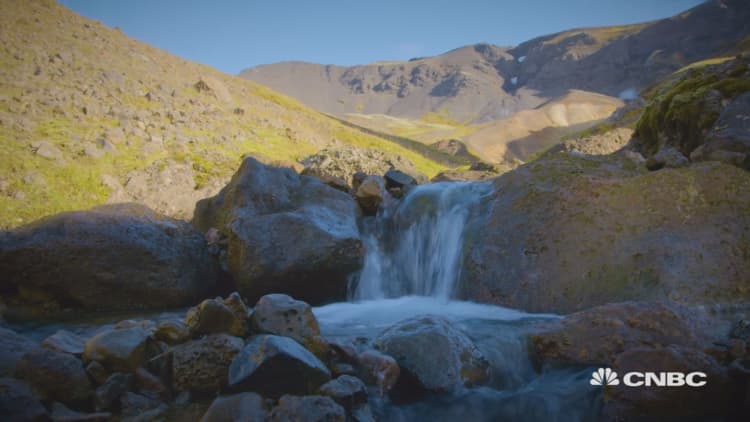
Iceland is a country where geothermal energy is so important that the country's National Energy Authority states that geothermal facilities generate 25 percent of its entire electricity production.
Now, one project – based at the Hellisheidi Geothermal Plant – is looking to develop technology to permanently store the by-products of the plant's processes inside volcanic rocks called basalts.
"We actually capture the CO2 at the power plant, dissolve it in water and inject it as sort of mineral water back into the ground," Edda Sif Aradottir, project manager at CarbFix, told CNBC's Sustainable Energy. A chemical reaction then takes place, which eventually turns the CO2 into minerals called carbonate, she added.
Hellisheidi is located on an active volcano ridge in the south west of Iceland, and has a capacity of 303 megawatts for electricity and 133 megawatts for thermal energy.
By-products of the plant's processes include both carbon dioxide and hydrogen sulphide. CarbFix is a collaboration between Reykjavik Energy, the University of Iceland, Columbia University and the Centre National de la Recherche Scientifique in Toulouse.
Around the world, carbon capture and storage (CCS) technologies are becoming increasingly important, with the International Energy Agency stating that CCS "can have a unique and vital role to play in the global transition to a sustainable low-carbon economy, in both power generation and industry."
According to the team behind the CarbFix project, they have demonstrated that more than 95 percent of the CO2 they captured and injected at the Hellisheidi geothermal plant became mineralized in two years.
What's next for the project? "We are currently capturing about 10,000 tons of CO2 a year," Aradottir said. "This is about 25 percent of the CO2 emissions from the power plant. We doubled the capacity this year, and we are taking it in stages … We'll see how far we get in the next years."




